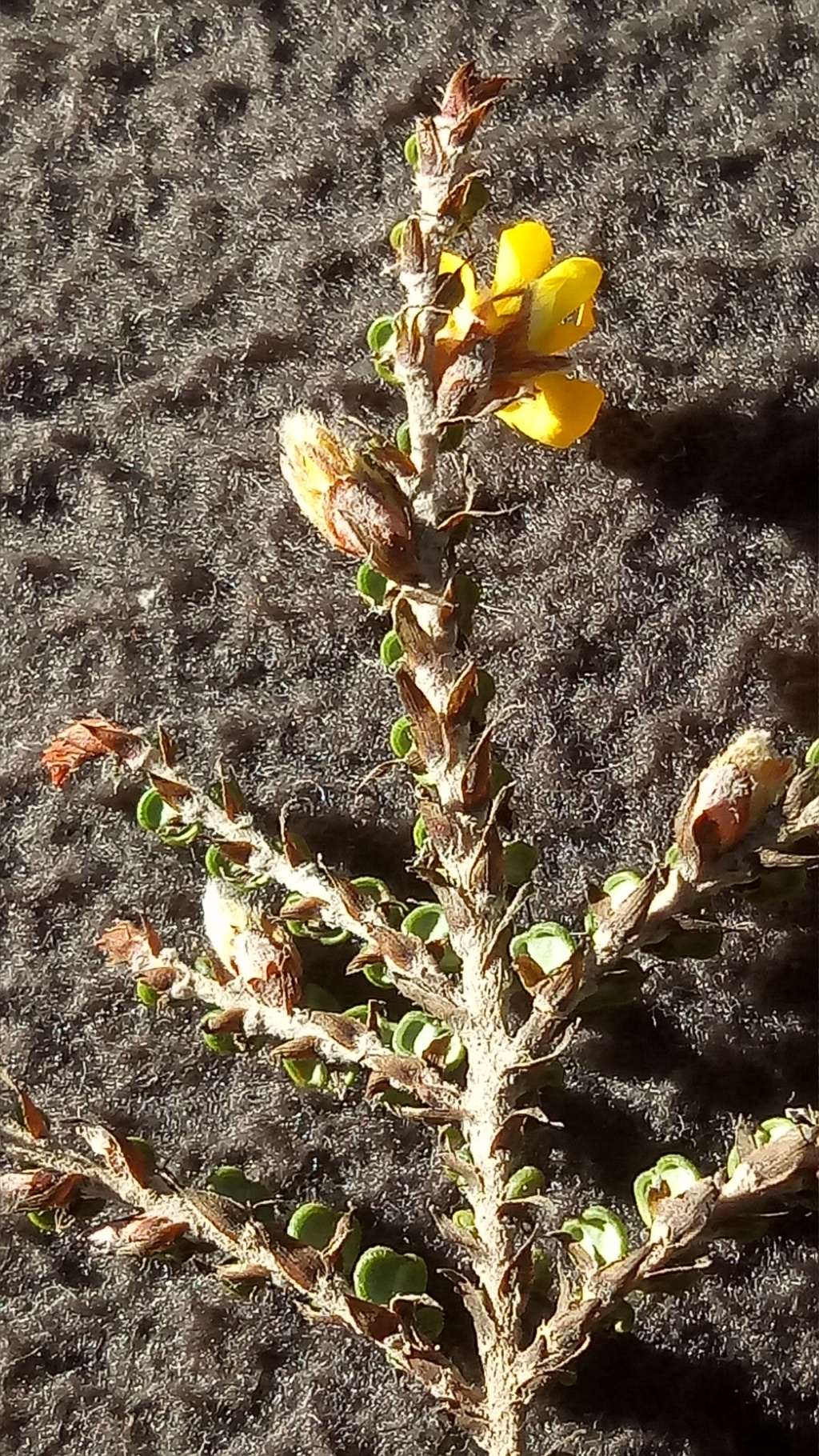Bossiaea distichoclada
F.Muell.Erect shrubs to c. 1 m high; branches terete, suberect, distichous, with a dense cover of ± straight hairs. Leaves alternate, unifoliate, obcordate, reniform or orbicular, 1–2.5 mm long, 2–4 mm wide; base broadly rounded to cordate; apex broadly rounded, truncate or emarginate; upper surface tuberculate; lower surface strongly concave, glabrous or with scattered hairs on the midrib, often white-dotted; margin recurved, often revolute in distal half; stipules triangular, 1.5–4 mm long, glabrous, exceeding the petiole, semi-persistent. Flowers solitary, 5–7 mm long; pedicle 1–2 mm long, pubescent; bracts crowded, broadly ovate, 1.5–3 mm long; bracteoles inserted near base of calyx and enclosing it, narrow-elliptic, (2–)2.5–4.5 mm long, pubescent, persistent; calyx 2.5–3.5 mm long, pubescent, lobes acute, ± equal, slightly shorter than tube; corolla uniformly bright yellow, petals ± equal in length; ovary stipitate, 2-ovulate, densely pubescent. Pods orbicular or broad-elliptic, 5–8 mm long, rusty-pubescent; stipe c. 1 mm long. Flowers Dec.–Jan.
NIS, EGU, HSF, HNF, VAlp. Also NSW. Occurs in montane to subalpine woodland in north eastern Victoria.
Previously included in Bossiaea foliosa (now considered to be a species complex also including B. alpina and B. sericea). Differs from other members of this species complex in having branches more often distinctly distichous, the leaf lamina very distinctly arched either side of the midrib with the lower surface consequently prominently concave or pouched, the bracteoles larger and enveloping the calyx, and the plants generally more floriferous. It is sometimes recorded as flowering slightly later than other members of this species complex in areas where they co-occur.
May hybridise with B. sericea (see note under that species).
 Spinning
Spinning
